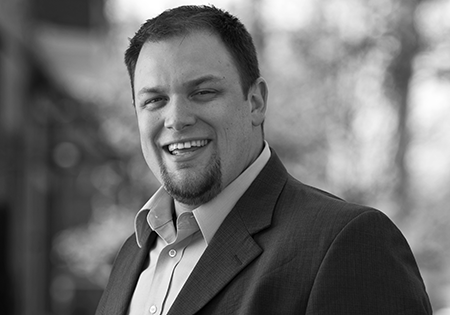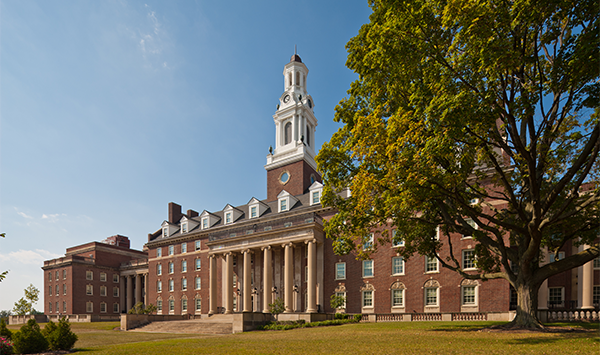The American Institute of Architecture Students (AIAS) is celebrating the 60th anniversary of student excellence in leadership, service, and design. In honor of our 60th year, the AIAS is excited to share 60th: Legacy, an ongoing weekly celebration of and thanks to our alumni sponsored by Professional Publications, Inc (PPI). PPI is a publisher of professional licensing exam materials since 1975 and wants to recognize those who have helped the AIAS achieve 60 years of success.

Name
Wayne Mortensen, AIA, NASW
Organization
Cleveland Neighborhood Progress
Title
Director of Design & Development
Connect
Bio
Being the lone architect on the staff of a not-for-profit community development organization is exhilarating. Armed with graduate degrees in architecture, urban design, and social work, my focus revolves around the creation of equitable and just communities. I work alongside social workers, lawyers, accountants, politicians, and activists to revitalize struggling neighborhoods through catalytic development projects, policy reform, and old-fashioned organizing.
I met my wife, Jill, while studying architecture at the University of Nebraska, just a few months before I was elected to serve the AIAS as National President at FORUM 2002 (Chicago)–it was a very good year! My tenure at AIAS (2003-04) was an eventful one and am most proud of our the work we did to initiate Freedom by Design (FBD); nothing has provided more inspiration and gratitude in my time since leaving AIAS than the myriad FBD YouTube videos I’ll queue up in my watch list from time to time. Kudos to all involved and the lives you have improved by combining your design skills with your humanity!
I’ve also had the pleasure of serving on the NAAB and doing two “tours” on the AIA Board, first as the student director and most recently as the Associate Director. In my opinion, the AIA remains an organization with tremendous untapped potential to improve people’s lives and we should all regard it as our conduit for positive change. I currently serve as a Trustee of the Cleveland Restoration Society and am the Public Outreach Director for AIA Cleveland, where I coordinate the local advocacy agenda and facilitate our annual scholarship benefit and sand castle design competition, “Beach Day.”
After AIAS, I completed graduate school at Washington University in St. Louis and worked as a planning consultant for H3 Studio while continuing to lecture at “WashU.” At H3, I was involved primarily in planning work in low-income and marginalized communities in East St. Louis, rural Illinois, and North Omaha and managed the firm’s portfolio in New Orleans, where it had been working since being selected as one of four firms to complete the Unified New Orleans Plan (UNOP) in the wake of Hurricane Katrina. That work was deeply meaningful, but the limitations of consulting pushed me to pursue an Enterprise Rose Architectural Fellowship in 2010, which brought me to Cleveland and to CNP.
The fellowship provided access to the community development industry, where my implementation mettle is tested on a daily basis. At CNP, I have been tasked with the facilitation of several high-profile projects, including the 2010 Neighborhood Stabilization Program Target Area Planning Process (prioritized $23.6M in federal grant monies among 16 different Cleveland neighborhoods) and the 2012-16 transformation of Saint Luke’s Hospital (a three-phase, $63Mn adaptive reuse of a 380,000 SF historic hospital), pictured here. As the design and development director, I am now charged with design advocacy and capacity building within the CDC network, including citywide planning efforts focusing on transit-oriented development and recreational equity.
My most important project began in mid-August, when our son, Graysen Oliver, joined the fold.
ARE Prep Tip: What is one piece of advice that you would give to those starting to test?
After passing my first exam, I took a 3-year break. DO NOT DO THAT!
What I would recommend is scheduling all of your exams for every-other month so that you are committed to taking them, but have a couple weeks off between intense review periods. Don’t burn out and keep the end-goal in mind: “registered architect,” which is especially cool if you decide to improve the world from a different profession or practice setting, like me. You will probably fail at least one of them–have that expectation going in and do not let it be a setback if/when it happens. Licensure is a small reward for our masochistic degree choice.

How did your experience with AIAS help you to achieve your goals?
I was able to visit over forty schools of architecture while serving as President and those visits (and the countless students I spoke with while on them) helped [re]convince me of the transformative potential of architecture and design thinking. I left undergrad being very jaded about the societal impact of American architects and these travels were a compelling counter.
Professionally, my work in the AIAS reinforced the value of true passion and authentic relationships in working to improve the lived condition, but it also introduced me to the harsh reality that cynicism and politics still frequently prevail.
What and/or who shaped you into who you are and what you do today?
My mother did the original shaping and a legion of mentors and friends have taken that baton since. The friendships forged during my time in the organization remain among the most intimate and trusted relationships that I enjoy.
How can someone best change the world?
“We have not yet intended.” Unknown
I heard this at a conference at some point and cannot manage to attribute the insight. In this profession, we talk A LOT about changing the world, but few of us do more than talk. To change the world, we have to resolve to do so by taking actionable steps to arm ourselves with the requisite knowledge and skills to do so.
An architecture degree, in and of itself, will not get you (us) there.
How can someone be a better designer?
Understand that you are a problem solver and allow your clients to educate you about three things: what they know, what they do, and why they do it. That should be all you need. After attempting to solve their problems check-in to see how you did (be receptive to brutal honesty) and learn how to ask better questions next time. Rinse and repeat.
Warning: If, at any point, you feel as if you have to “educate your client” about something, you are most likely doing it wrong.
What is one tip you would give yourself in your 20s?
Maintain the relationships most important to you.
How have you overcome unforeseen challenges through your career?
We must learn to keep our heads up. Most of the challenges usually announce themselves well ahead of time, but we allow them to become hurdles while we have our heads down trying to solve smaller problems.
Great site foremen (general contractors) excel at this–learn from them.
How do you define work-life balance and how is it achievable?
We are as balanced as the people with whom we surround ourselves. I found balance by leaving the traditional practice of architecture and becoming part of a more outwardly focused organization. Design and development work is inherently cyclical, so there will always be periods of intensity, but balance is maintained by setting realistic expectations and allowing friends and family to calibrate your perspective.
What is a decision or action you made in school that influenced your trajectory?
At the end of undergrad, I started to understand that the architect-visionaries our profession has historically promoted did not have a clue about the social issues they set out to solve through design.
Having no interest in repeating our collective sins, I attended graduate school at the only place that would allow me to study architecture, urban design, and social work at the same time–not just to rack up graduate degrees and the resulting debt, but also to better understand the intractable social issues I was committed to addressing. In doing so, I began to regard graduate schools not as gatekeepers to the profession, but as service providers for deliberate educational consumers determined to investigate the elements of society that they are most interested in addressing after graduation.
If you, or another AIAS alumni you know, deserves recognition for their contribution to the profession and society at large, please use the link below to nominate them for this honor.











